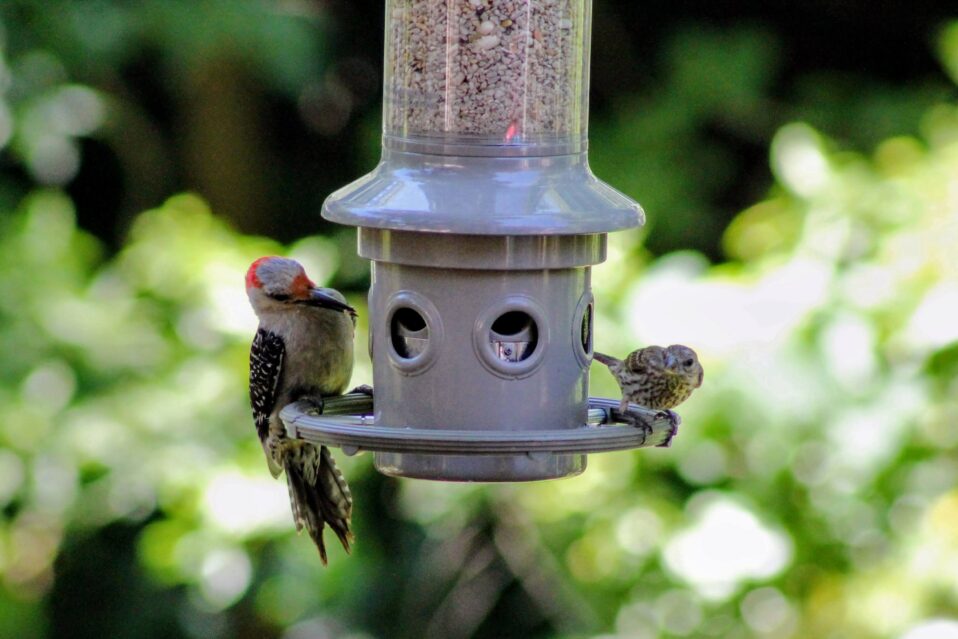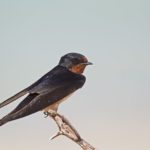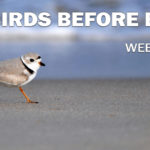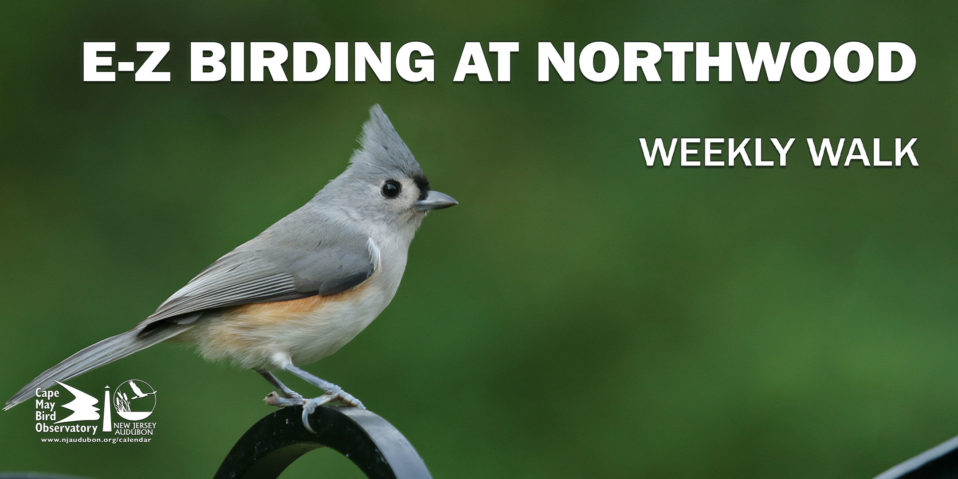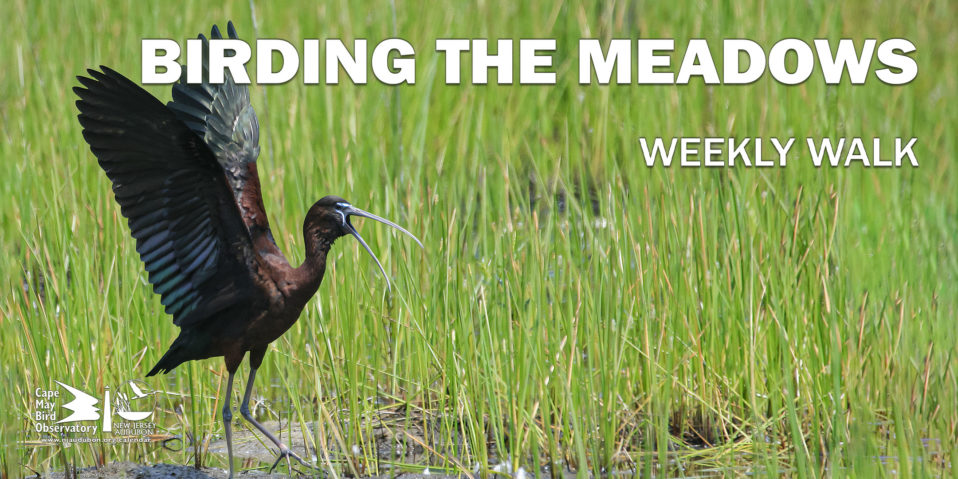By Sally Lorbach
For the past few years, there has been public concern about numerous outbreaks of zoonotic disease among avian populations. However, there are a number of precautions you can take to keep your backyard as bird-safe as possible.
While birdfeeders can be a great way to enjoy the wildlife in your area, places where lots of birds congregate can cause issues. Many of the most prevalent diseases are spread through mucous, saliva, and feces, which can be passed on shared surfaces- this makes feeders hubs for disease transmission. It is important to keep your feeders sanitized to reduce the spread of illness.
You should be cleaning your birdfeeders every one to two weeks, depending on weather and disease reports- hotter temperatures or periods of disease outbreak require more frequent cleaning. To effectively sanitize your feeder, take it apart completely. Many birdfeeders are dishwasher safe, and you can simply run them through the hottest cycle. If you can’t use a dishwasher, handwash each piece thoroughly with a solution of 1 part bleach to 9 parts water or very hot soapy water. You may need to use a bottle brush or pipe cleaner to get into tight spaces. After cleaning, make sure to rinse thoroughly to remove any residue of bleach or detergent, and allow to dry completely before refilling with seed.
Birdbaths can be similarly contaminated and should be regularly cleaned in the same manner as feeders. Water should be replaced two to four times a week to prevent the growth of bacteria and mold and ensure mosquitoes can’t breed- mosquitoes can also be disease vectors.
During periods when disease is especially prevalent, it may be recommended that feeders and birdbaths are taken down entirely. Migration tends to be a period when birds are most likely to get sick, but it can happen at any time. To keep up with the most up to date information, check the USDA website or your state’s environmental or fish and wildlife department. Here in New Jersey, NJDEP has lots of resources.
If you are birdwatching regularly, keep an eye out for signs of disease. Some of the more common things to watch for are:
Avian Pox-
- Most commonly affects small songbirds and upland game birds.
- Can present as warty growths on featherless parts of the bird or plaques on the mouth.
- Transmitted by mosquitoes.
Salmonellosis
- Caused by the salmonella bacteria.
- Most common in finches, sparrows, and cowbirds.
- Symptoms may include lethargy, incoordination, and convulsions.
- Spread through saliva and feces.
- Usually fatal.
Mycoplasmal Conjunctivitis (House Finch Eye Disease)
- Most commonly affects house finches but has been seen in other songbird species.
- Causes eye swelling and sometimes blindness.
- Transmitted through ocular discharge contact and contaminated surfaces.
- Not lethal, but blindness may cause birds to die by exposure or predation.
Highly Pathogenic Avian Influenza (Bird Flu)
- Most common in waterfowl, poultry, and raptors, but frequently affects other birds.
- Spread through saliva, mucous, and feces.
- Causes severe, systemic disease and is usually fatal.
While transmission to humans is uncommon, you should never handle a sick or dead bird. However, if you see something of concern you should report your findings. Visit HERE for next steps.
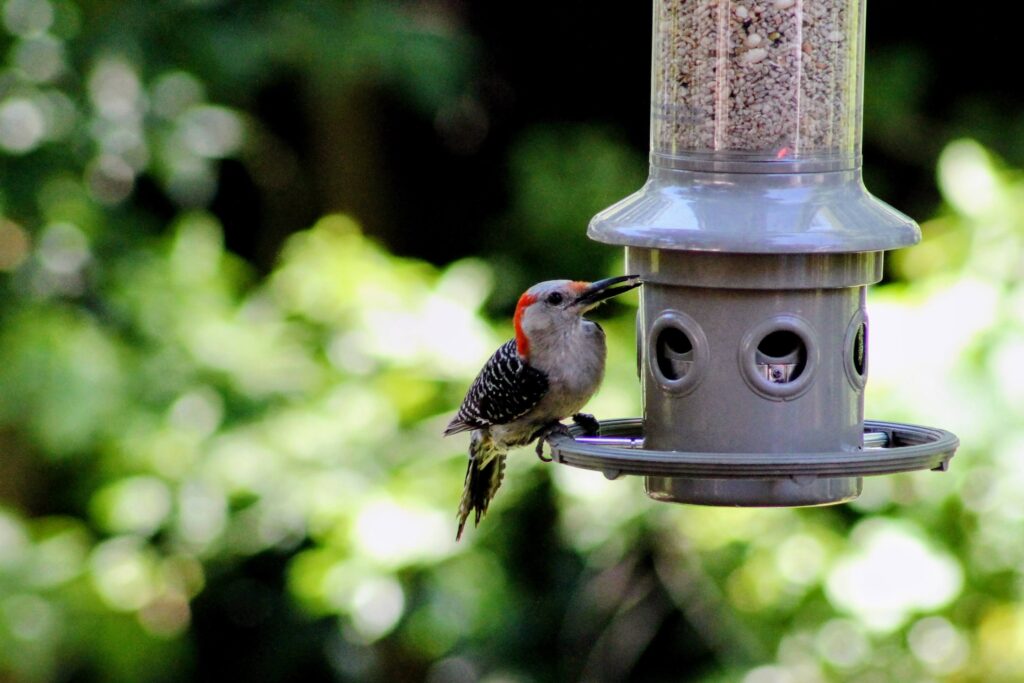
Red-bellied Woodpecker photo by Sally Lorbach




